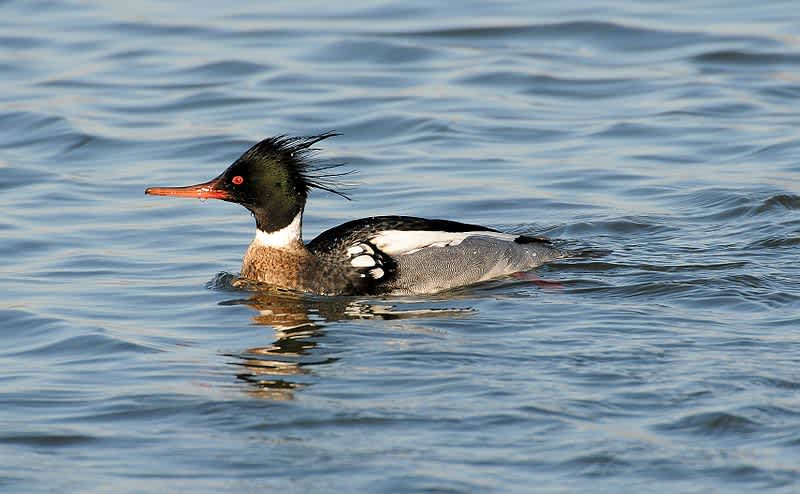Severe Winter Threatens Great Lakes Ducks, Drives Survivors Inland
OutdoorHub Reporters 03.18.14

A harsh winter and high ice coverage on the Great Lakes may spell trouble for the region’s duck population. According to MLive.com, many species of waterfowl are fleeing inland, while biologists are finding hundreds of bird carcasses near the water.
“All (the ducks) have empty stomachs. They’re half the weight they should be,” New York Department of Environmental Conservation biologist Connie Adams told the Associated Press.
Adams, who works out of the agency’s Buffalo office, personally counted 950 dead birds. Examination of the carcasses show that the cause of death was indeed starvation. In nearby Michigan, the story is much the same. Instead of eating minnows, a common source of sustenance for many species of waterfowl, some of the birds were found scavenging a meal from invasive zebra mussels. However, since zebra mussels filter toxins from the water, the birds are now suffering from increased levels of selenium in their bodies.
Even birds fortunate enough to be near unfrozen water are finding it hard to survive. At one point, the total ice coverage across the Great Lakes measured over 92 percent, making it the highest in decades. This prompted birds to fly out further and to dive deeper for food. The nutrients gained from this exhausting journey were often not enough to keep the ducks flying, and as a result many lacked the energy to seek out open water inland. Some that were able to make it inland are being found by residents on the ground, and too weak to fly.
“They are coming down, sometimes on the roads where sometimes it looks similar to open water,” Erin Stacks told USA Today. Stacks runs the Back 2 the Wild animal rehab facility in Fort Gratiot, Michigan where volunteers have been taking in and releasing grounded ducks.
“Once they come down, they can’t get back up. They can’t take off unless they are in water or they’re so weak they can’t take back off. Unless somebody finds them, they basically sit there and either freeze to death or starve to death,” Stacks said.
The migration of ducks inland is also offering birdwatchers a new variety of waterfowl to spectate, such as red-breasted mergansers and white-winged scoter. While many species of ducks will readily eat bread and other human food, mergansers require a diet of live fish. Many now find themselves the guests of wildlife rehabilitators, who are finding it hard to feed the hungry ducks even with donations from local bait shops.
“A merganser can eat 200 to 250 fish per day,” animal rescue worker Dawn Mazierski said. “We go through thousands of fish a day.”
For now, wildlife officials are not treating the situation as an emergency.
“This year has been exceptional because of the lack of open water,” said Russ Mason, chief of wildlife at the Michigan Department of Natural Resources. “We have duck or swan issues every single year. Swans more than ducks because they’re disinclined to go anywhere (for the winter) or they go as far as they absolutely have to.”

